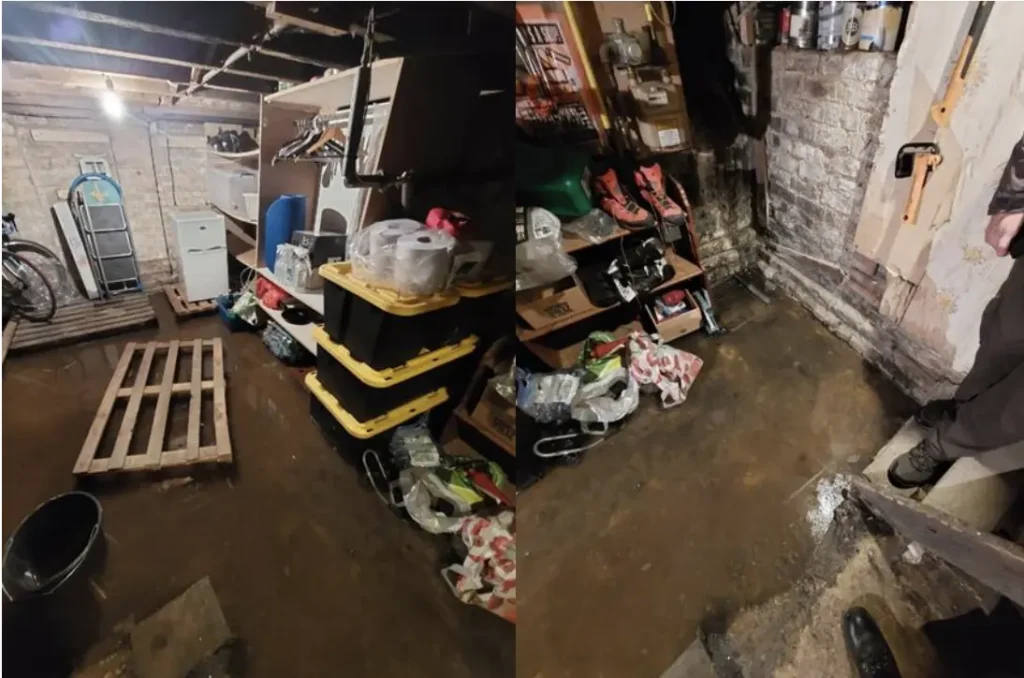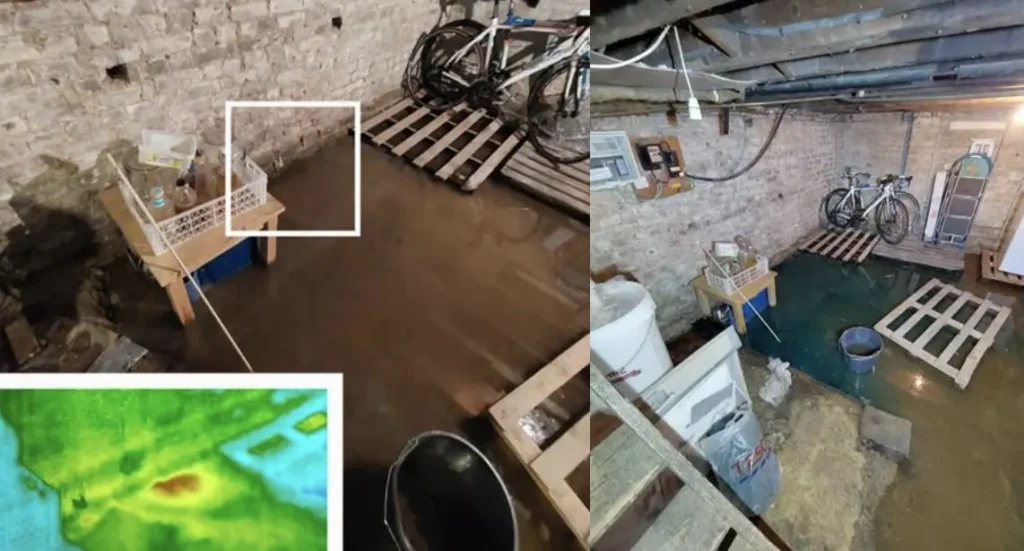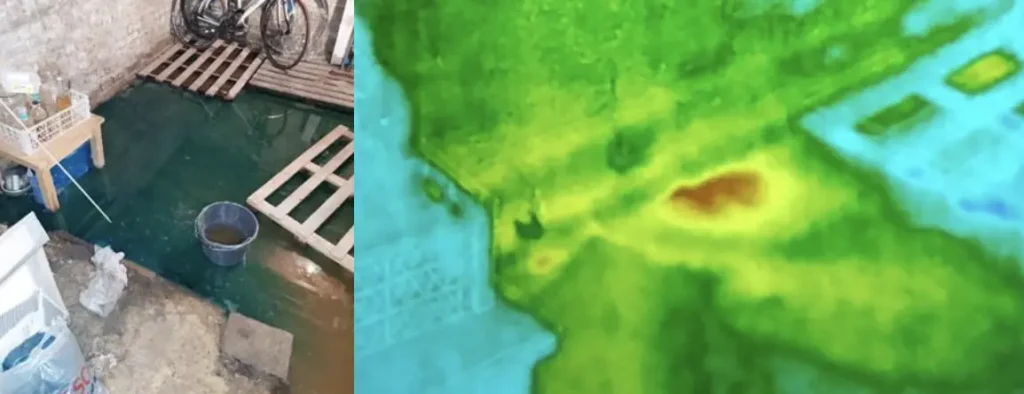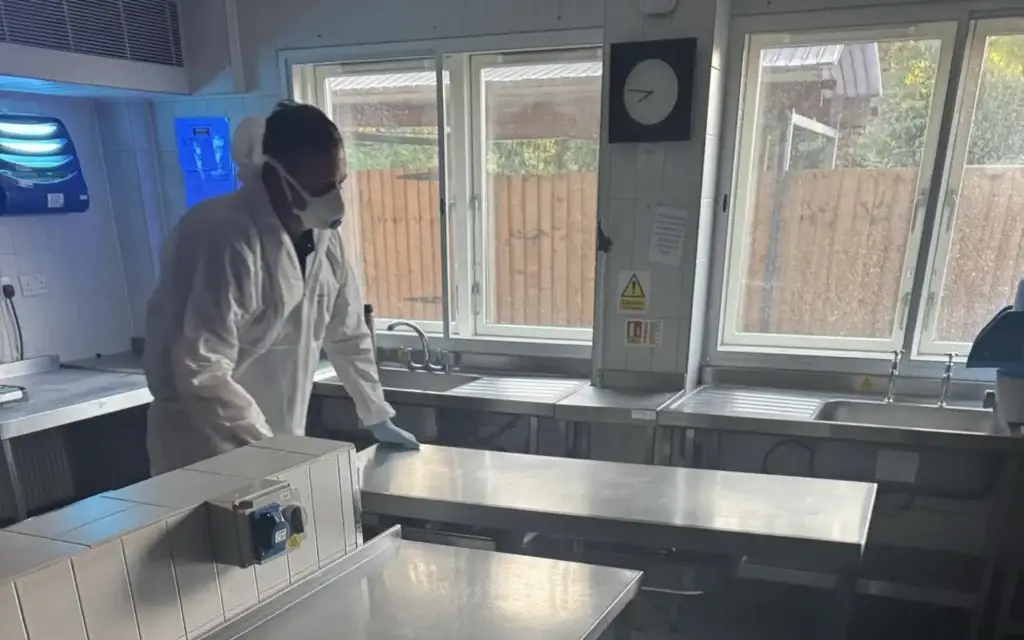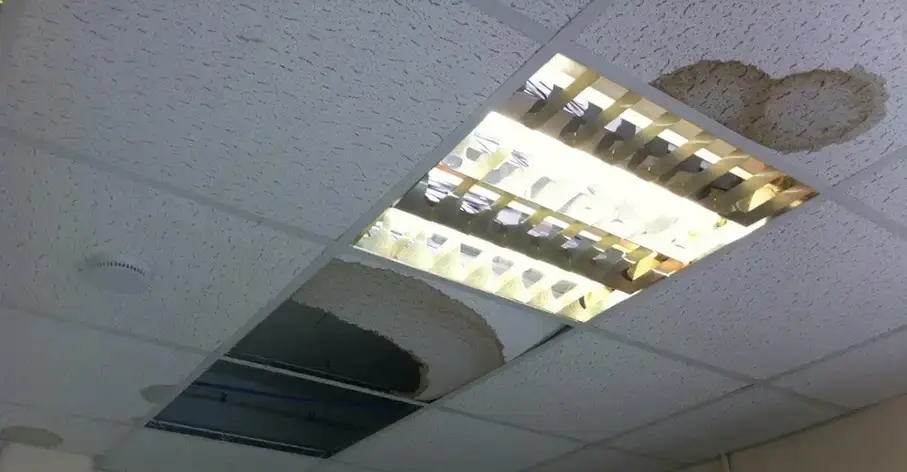The Problem: Hidden basement leak
A property owner contacted us looking for a leak detection service after discovering standing water in the basement of a multi-tenanted, 1900s building. The water had a noticeable odour, raising concerns that it could be wastewater ingress caused by a leak.
The issue was particularly puzzling because there had been no recent heavy rainfall, ruling out typical weather-related flooding. Given the potential health risks for tenants, it was crucial to quickly identify the source of the leak and implement an effective solution.
Leak detection is critical in the UK, where hidden leaks cause millions of pounds in property damage each year. Studies show that one in three UK homes has experienced a water leak, and undetected leaks can increase water bills by up to £300 per year. Early detection prevents structural damage, mould growth, and costly repairs.
With these risks in mind, we carried out a detailed leak detection survey.
The Solution: Non-invasive leak detection
Our leak detection specialists followed a systematic, non-invasive approach to pinpoint the exact cause of the water ingress.
Step one: Site investigation
We conducted a thorough inspection of the property, testing all internal and external hot and cold water pipework. Initial checks showed no visible leaks from these systems. However, when testing the internal wastewater pipework, we identified a damaged soil pipe at foundation level.
Each time the waste pipe was used, water leaked into the cellar, leading to continuous foul water ingress.
Step two: Advanced leak detection techniques
To accurately trace the source of the leak, we used two key detection methods:
- Tracer Dye Testing – This involved introducing a harmless, highly visible dye into the drainage system. The dye helped us track the water’s path, revealing the exact point of leakage in the damaged soil pipe.
- Thermal Imaging – By using infrared technology, we could detect temperature variations and pinpoint hidden moisture build-up within the structure. This non-invasive method allowed us to confirm the leak’s location and severity without unnecessary excavation.
Both methods offer significant advantages, including:
- Non-destructive leak detection – no need for disruptive drilling or digging.
- Fast and precise results – speeds up the repair process.
- Cost-effective solutions – reduces labour costs and prevents unnecessary repairs.
The Result
Thanks to our precise leak detection process, we provided the client with clear evidence of the faulty soil pipe and a comprehensive report outlining next steps.
- A specialist drainage company was appointed to repair the damaged pipe.
- Sanitisation and drying of the cellar were recommended to eliminate odours and prevent mould growth.
- Long-term water damage was avoided, protecting the building’s structural integrity.
Leaks in older buildings can go undetected for months, leading to escalating damage and repair costs. In the UK, water damage claims make up 30% of all home insurance claims, and undiagnosed leaks can weaken foundations, encourage damp, and increase energy bills due to excess moisture.
By using tracer dye and thermal imaging, we ensure non-invasive, accurate, and cost-effective leak detection which help property owners take early action before major issues crop up.
If you suspect water ingress in your property, don’t wait for the damage to get worse. Contact one of the team for a fast, professional leak detection service.
